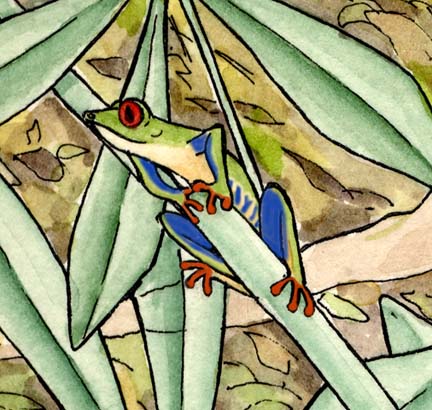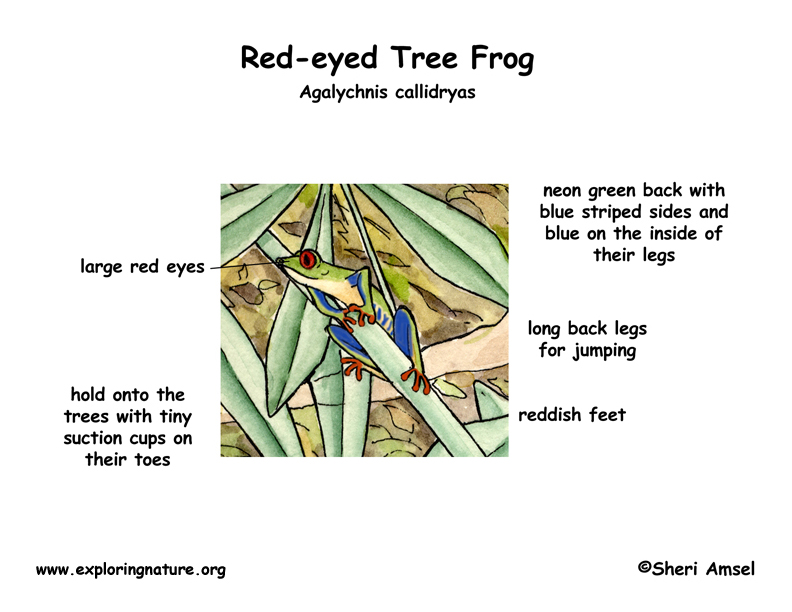


They are found in Central and South America.
They live in the trees near water in tropical rainforests.
They are mostly green with blue sides with yellow stripes, reddish feet and large red eyes. They hold onto the trees with tiny suction cups on their toes. They have long legs for jumping.
They are active at night (nocturnal).
They eat insects and small water animals, including other frogs.
Red Eyed Tree Frogs are eaten by snakes and large birds.
The females lay their eggs on the bottom of leaves that hang over the water. When they hatch, the baby tadpoles fall into the water where they grow and change over time into adult frogs.
Kingdom: Animalia
Phylum: Chordata
Subphylum: Vertebrata
Class: Amphibia
Order: Anura
Family: Hylidae
Subfamily: Phyllomedusinae
Genus: Agalychnis
Species: A. callidryas
When you research information you must cite the reference. Citing for websites is different from citing from books, magazines and periodicals. The style of citing shown here is from the MLA Style Citations (Modern Language Association).
When citing a WEBSITE the general format is as follows.
Author Last Name, First Name(s). "Title: Subtitle of Part of Web Page, if appropriate." Title: Subtitle: Section of Page if appropriate. Sponsoring/Publishing Agency, If Given. Additional significant descriptive information. Date of Electronic Publication or other Date, such as Last Updated. Day Month Year of access < URL >.
Amsel, Sheri. "Frog (Red-eyed Tree)" Exploring Nature Educational Resource ©2005-2024. December 13, 2024
< http://www.exploringnature.org/db/view/61 >
